The Hisense S7NQ Canvas TV is a very interesting proposition, especially for those looking for something in the style of a picture-television but do not want to spend a fortune. At first glance, it stands out primarily because the gallery mode featuring works of art is completely free – there is no subscription to pay, as is the case with Samsung's The Frame. Moreover, in the box, we immediately get a light brown frame, which will be an additional bonus and saving for many people. Although it is essentially a TV for displaying art, surprisingly, it also performs quite well in other applications. The 144 Hz panel, full HDMI 2.1, support for VRR and ALLM – all this makes gaming on consoles quite possible and quite enjoyable. The Vidaa system operates smoothly, and we find all the most important apps and features here, such as AirPlay, USB recording, or screen mirroring from a phone. However, there are also things that fall a bit short. Above all – the images themselves. Compared to The Frame by Samsung, here they simply look more digital. It lacks the depth, texture of paint, and subtle details that really impress with the competitor. Although at first glance we are dealing with a similar matte panel, in practice, it performs significantly worse at suppressing reflections. Colours and blacks fade much quicker, especially in a bright room. This could also be the effect of lower brightness – Hisense is simply darker than its Korean rival. On top of that, there are minor software issues – for example, the inability to display external subtitles despite configuration options, or the not entirely effective image smoothing feature for lower quality materials. In short: the S7NQ is a good TV in the form of a "picture," which can be a great alternative for those who do not mind the lower quality of displayed works but appreciate the lack of subscription fees, an additional frame included in the package, and full functionality of a typical television. It is not an ideal product, but a reasonable compromise for Samsung's The Frame.
- Matching (Score)
- Our verdict
- TV appearance
- Where to buy
- Contrast and black detail
- HDR effect quality
- Factory color reproduction
- Color reproduction after calibration
- Smoothness of tonal transitions
- Image scaling and smoothness of tonal transitions
- Blur and motion smoothness
- Console compatibility and gaming features
- Input lag
- Compatibility with PC
- Viewing angles
- TV efficiency during daytime
- Details about the matrix
- TV features
- Apps
- Playing files from USB
- Sound
Hisense S7NQ CanvasTV vs Samsung QN80F
Direct compare
S7NQ / CanvasTV
QN80F
Available screen sizes: 55”

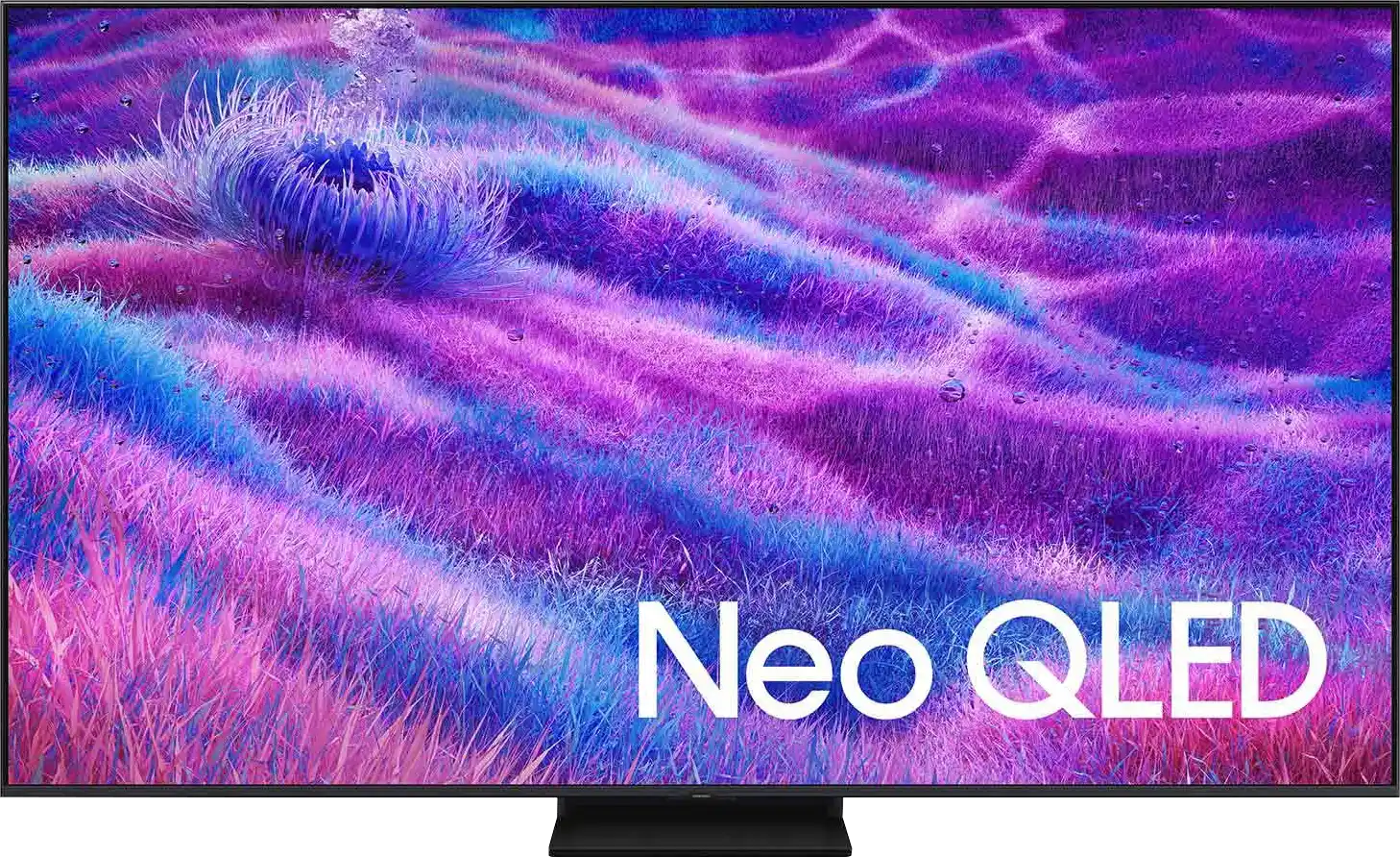
Panel type: LCD VA
Resolution: 3840x2160
System: VIDAA
Model year: 2024
Complete the survey to find out the result

Panel type: LCD VA
Resolution: 3840x2160
System: Tizen
Model year: 2025
Complete the survey to find out the result

Overall rating
6.7
7.3
Movies and series in UHD quality
6.6
6.9
Classic TV, YouTube
6.3
6.8
Sports broadcasts (TV and apps)
6.1
6.7
Gaming on console
7.5
8.5
TV as a computer monitor
7.0
8.8
Watching in bright light
5.4
6.6
Utility functions
9.0
7.5
Apps
7.7
8.7
Sound quality
6.3
6.7
Complete the survey to find out what fits your preferences
Advantages
Free gallery without a subscription
Frame included
Good for gamers (144 Hz, HDMI 2.1, VRR, ALLM, Game Bar)
Supports Dolby Vision, HDR10 and HDR10+
Decent native contrast (VA Panel)
Works well with PC (chroma 4:4:4)
Fast Vidaa System
Straightforward connection to home cinemas: Supports Dolby and DTS codecs
Impressive blacks and contrast - VA panel combined with MINI-LED backlighting.
Great brightness - up to 1000 nits in HDR
Fast and responsive panel - 144 Hz
Rich support for gamers - 4xHDMI 2.1, VRR, ALLM, GameBar, Game Motion Plus
Very good usability in daylight
Advanced Tizen operating system
Simple operation
PiP function
Disadvantages
Worse quality of displayed images in gallery mode than in Samsung The Frame
Colours and black fade significantly in bright surroundings
Lack of HGiG mode (for gamers)
Software issues - no display of external subtitles in films
No support for DTS format – a limitation when connecting a home cinema
No recording function to USB
Relatively few dimming zones
Issues with the HGiG function (for gamers) – the update removed this option*
Our verdict
The QN80F is the first "eighty" from Samsung to enter the series of televisions with Mini LED backlighting. And it does this very well. Although the number of dimming zones isn't particularly impressive, the quality of black levels is solid, and combined with high brightness, it allows for a very decent picture in HDR content. Additionally, there's a 144Hz panel that ensures excellent motion fluidity, and the set of gaming features – VRR, ALLM, Game Motion Plus – makes the QN80F a model practically designed for those gaming on consoles or PC. The television operates quickly and responsively, and the Tizen system runs like lightning – whether you're searching for apps or switching sources. Is there anything to criticise? Of course, as always – there are shortcomings in the system (like USB recording), there's no DTS support, and Mini LED isn't without its limitations. But the QN80F is a fantastic television for everyday use – versatile, refined, and... with great pricing potential. Because looking at the history of this series, we can expect that this "eighty" will mix things up significantly once it hits the first sensible promotions. At that point, it could be virtually unmatched in its price range – especially if Samsung resolves the minor teething issues.
TV appearance




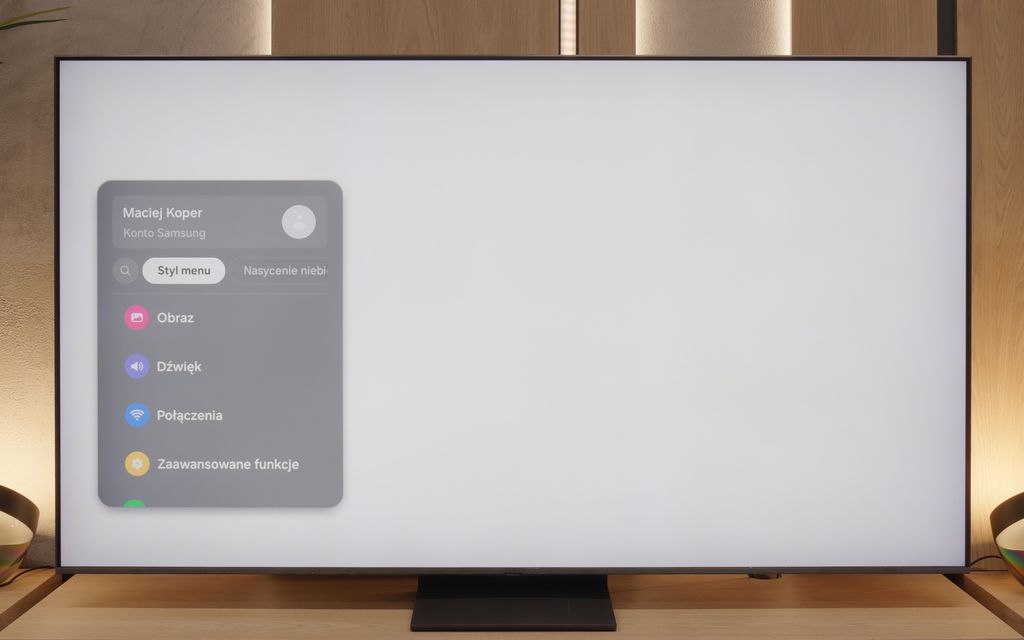
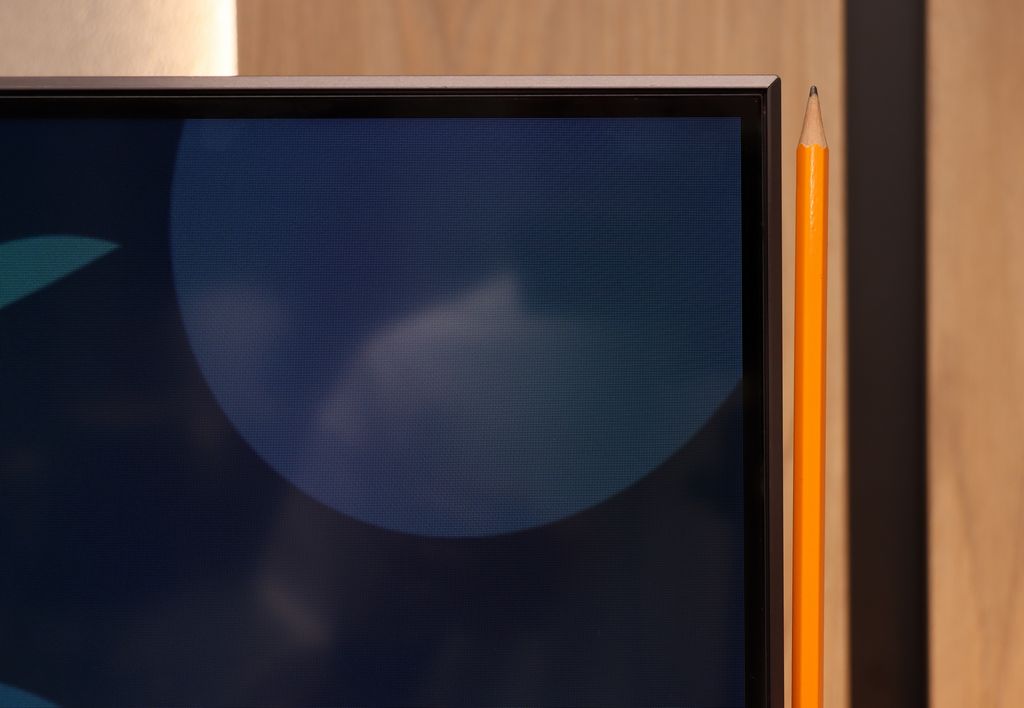
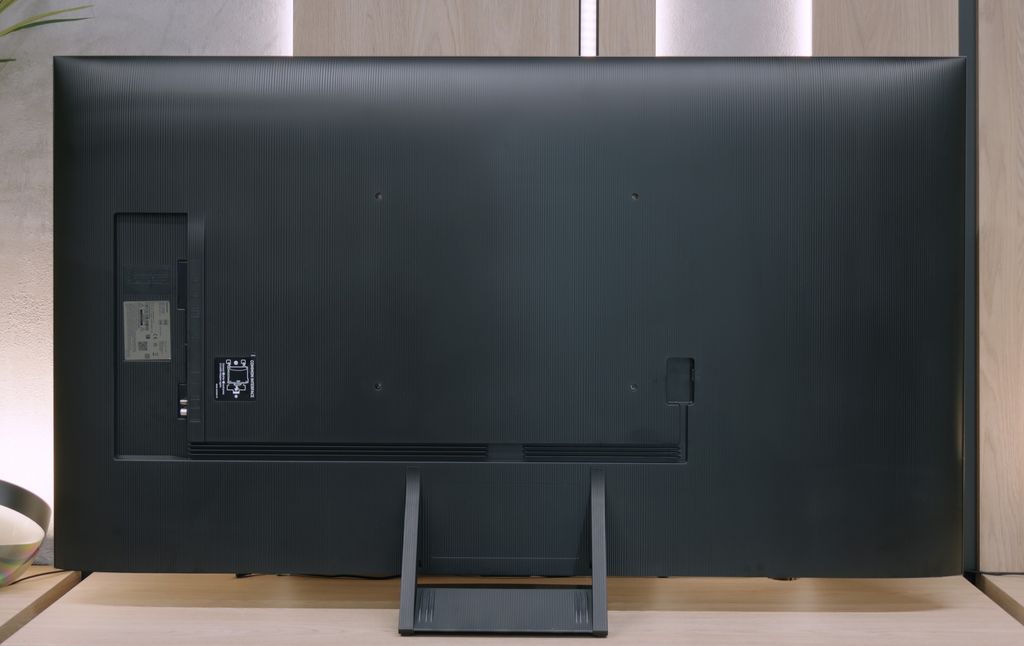

Contrast and black detail
5.6/10
6.8/10
Local dimming function: No
Local dimming function: Yes, number of zones: 88 (8 x 11)
Contrast:

Result
3,400:1

Result
4,200:1

Result
5,200:1

Result
5,050:1

Result
3,650:1

Result
34,100:1

Result
8,200:1

Result
32,500:1

Result
4,550:1

Result
3,800:1
Halo effect and black detail visibility:

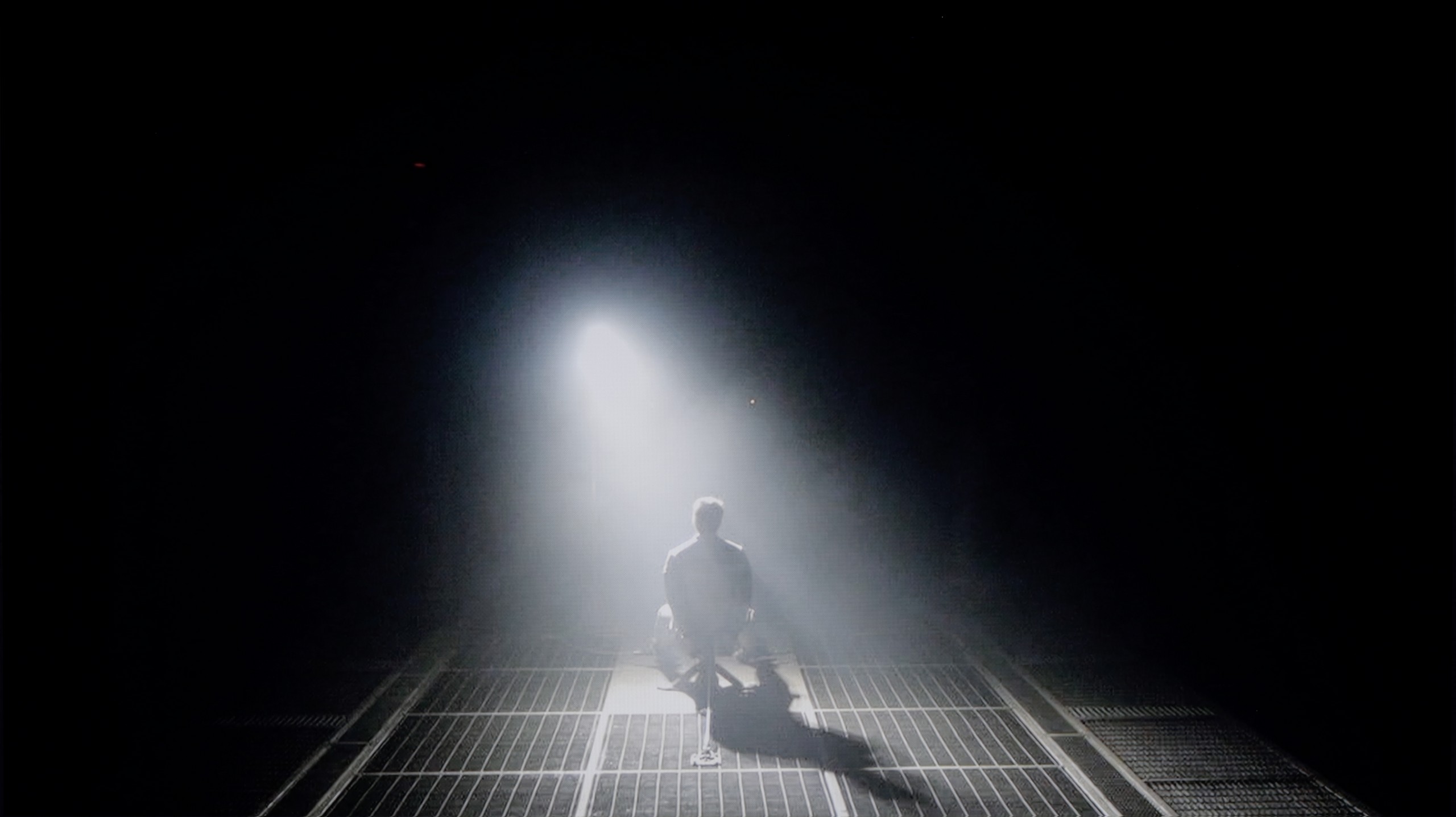
The Hisense S7NQ CanvasTV is a television equipped with a VA panel, which in itself provides decent contrast. This is confirmed by our test charts – an average score of around 4000:1. It's not a stunning value, but for this class of device – quite decent. Perhaps the result would have been significantly better if the television had been equipped with local dimming technology, however, unfortunately, this model lacks it. As a result, blacks in a completely darkened room resemble shades of navy or grey rather than pitch black. This situation causes a slightly noticeable clouding effect. Generally, it's okay, but without much enthusiasm.
QN80F is a representative of the Neo QLED series, meaning it is a television with Mini LED backlighting. Unlike its cheaper cousin, the QN70F model, the diodes here are placed directly behind the panel (rather than at the edges), which gives it a solid advantage right from the start when it comes to contrast control. In the 65-inch variant we tested, we counted 88 dimming zones – a result that may not be particularly impressive, but as it turned out, sufficient to achieve quite decent results.
In tests based on scenes from films such as Oblivion and The Meg, the QN80F performed well – blacks were deep, and the overall image consistency was visually appealing. However, in more demanding moments (e.g., scenes with a large number of bright details on a dark background), a halo effect appeared. This is where the limitation of the number of zones becomes evident – bright elements could bleed into one another, and some details in the dark areas lost visibility. In one scene featuring a helicopter (The Meg), we even noticed slight brightness flickering, as if the television was trying its best to maintain detail visibility at the expense of black depth.
However, these issues are not exclusive to this model – halo effects or drops in contrast during very complex scenes are challenges faced by most Mini LED televisions, even the more expensive ones. In its class, the QN80F performs positively and offers significantly better contrast than the QN70F model with edge backlighting. For most users, this will be a level more than sufficient – although not perfect.
HDR effect quality
5.6/10
5.8/10
Luminance measurements in HDR:

Result
455 nit

Result
414 nit

Result
438 nit

Result
451 nit

Result
470 nit

Result
799 nit

Result
533 nit

Result
717 nit

Result
245 nit

Result
656 nit
Scene from the movie “Pan” (about 2800 nits)


Scene from the movie “Billy Lynn” (about 1100 nits)


Static HDR10


Dynamic: Dolby Vision
Dynamic: HDR10+


HDR luminance chart:
Samsung QN80F
Luminancja HDR
Luminance of RGB colors
Hisense S7NQ CanvasTV
Luminancja HDR
Luminance of RGB colors
When it comes to the brightness of the television and how it handles bright elements while watching films, it is simply average – similar to the case with contrast. The average brightness level of the Hisense S7NQ is around 500 nits. This is a value that allows one to feel the beginnings of true HDR, but it is definitely too little to speak of remarkable effects. However, the television should be praised for its colour gamut coverage – films look very colourful and vibrant. Thanks to the use of PFS LED (QLED) coating, the device is capable of covering over 90% of the DCI-P3 colour palette and over 72% of the wider BT.2020 palette. For a television of this class – these are really very good results.
QN80F is quite a bright screen – in synthetic tests, it achieved nearly 1000 nits, which allows for justified expectations regarding HDR content. And indeed, in many scenes, the television can truly shine. Sequences with a lot of light – like shots from the film Life of Pi or wide, bright surfaces in The Meg – look impressive. Brightness remains around 700 nits, which provides a solid effect, sufficient to feel the true "HDR magic." Unfortunately, not every scene looks that good. In materials with small, bright details on a dark background, such as in Sicario 2, the television has issues – it can significantly dim certain elements, sometimes to the point where they disappear from the image. This is the result of a limited number of dimming zones, which forces the device to make compromises: either maintain inky blacks or sacrifice some detail. QN80F usually chooses the former. As a consolation, there is quite decent coverage of a wide colour gamut – DCI-P3 at 93%. This is not the highest score on the market, but it is more than adequate for most content on streaming platforms.
Factory color reproduction
7.2/10
6/10


Factory Mode
After calibration


Factory Mode
After calibration
Let's now check how the Hisense S7NQ CanvasTV performs in colour reproduction in the best factory mode, which is Filmmaker. Right from the start, it is clear that it is decidedly better than in dynamic or standard modes, but there are still a few things to nitpick. Regarding image quality from an HD signal, the colours are slightly inaccurate – there is a dominance of cooler shades of blue and a lack of red. This makes the image appear somewhat too cool.
A similar effect can also be observed with 4K content, but there it is much more noticeable. The excessive exposure of blue tones and the lack of red result in the image appearing distinctly cold. However, the biggest problem with this television is not the colours themselves but the way brightness is managed. The tested unit slightly boosted brightness compared to the reference value. While this results in better visibility of details, it comes at the cost of significantly brightened blacks – causing the entire image to seem more "flat".
A similar phenomenon was noticed in the 4K signal – the slightly elevated curve at the beginning of the EOTF chart shows that the television has a tendency to overexpose certain scenes. Fortunately, this effect can be improved with professional calibration, which we will discuss in the next point.
We test televisions always in the best available factory mode – in the case of the Samsung QN80F, this is the Filmmaker mode, and indeed, it is this mode that offers settings closest to the creators' intentions. However, this does not mean that everything looks perfect. In SDR content, the biggest problem turned out to be an unbalanced white balance – slight deficiencies in green and a noticeable excess of red led to discernible colour errors, one could even say a pinkish tint on the screen. This was well demonstrated in the colour checker test, where the colours 'escaped' beyond their target fields – to the extent that even a sensitive viewer's eye could catch this without the aid of a meter.
In HDR content, the white balance was much better, but another issue arose – brightness management. The EOTF curve resulted in an overly bright image for most of the time, which could affect the perception of contrast and caused the screen to subtly 'flicker' during dynamic light changes. We have already written more about this in the paragraphs on black levels and HDR. Fortunately, Samsung leaves the user with plenty of options. The QN80F offers a rich set of calibration options, including a 20-point white balance – therefore, we decided to check what this television is really capable of after proper calibration.
Color reproduction after calibration
8.3/10
8.3/10




The results we achieved after calibrating the Hisense S7NQ are really very good. Thanks to the calibration, we managed to eliminate the excessive exposure of blue tones and deficiencies in red with HD signal. A similar, albeit slightly weaker effect was also achieved with 4K HDR content. Managing brightness in HD material has also been improved – the television no longer has issues with brightening the image "across the board."
However, there are things that cannot be bypassed. The characteristic of the EOTF curve has practically not changed, and the lack of local dimming means that the smallest elements on the screen will always be slightly overexposed. One simply has to come to terms with this when choosing a television with a similar type of backlighting. Despite this, the final effect is very good and should fully satisfy the vast majority of users.
After conducting a thorough calibration, it was possible to bring most of the image parameters to a really good level. The white balance in both SDR and HDR is nearly perfect – the picture is natural, neutral and devoid of the previously noticeable redness. The colours have gained depth, and the overall visual reception has become more pleasant and cohesive. It was also possible to partially master the brightness management, which in the factory version could be problematic. The EOTF chart shows that the television performs significantly better with brightness after calibration – there is no longer excessive dimming of certain elements. In films, it can still be noticed that the QN80F has a tendency to slightly brighten the smallest, light details – however, this is the effect of the device's design and the limited number of dimming zones. In short: not everything can be overcome, but what could be has been improved. After calibration, the QN80F makes a really good impression; it simply looks more mature and professional.
Smoothness of tonal transitions
9.2/10
9/10





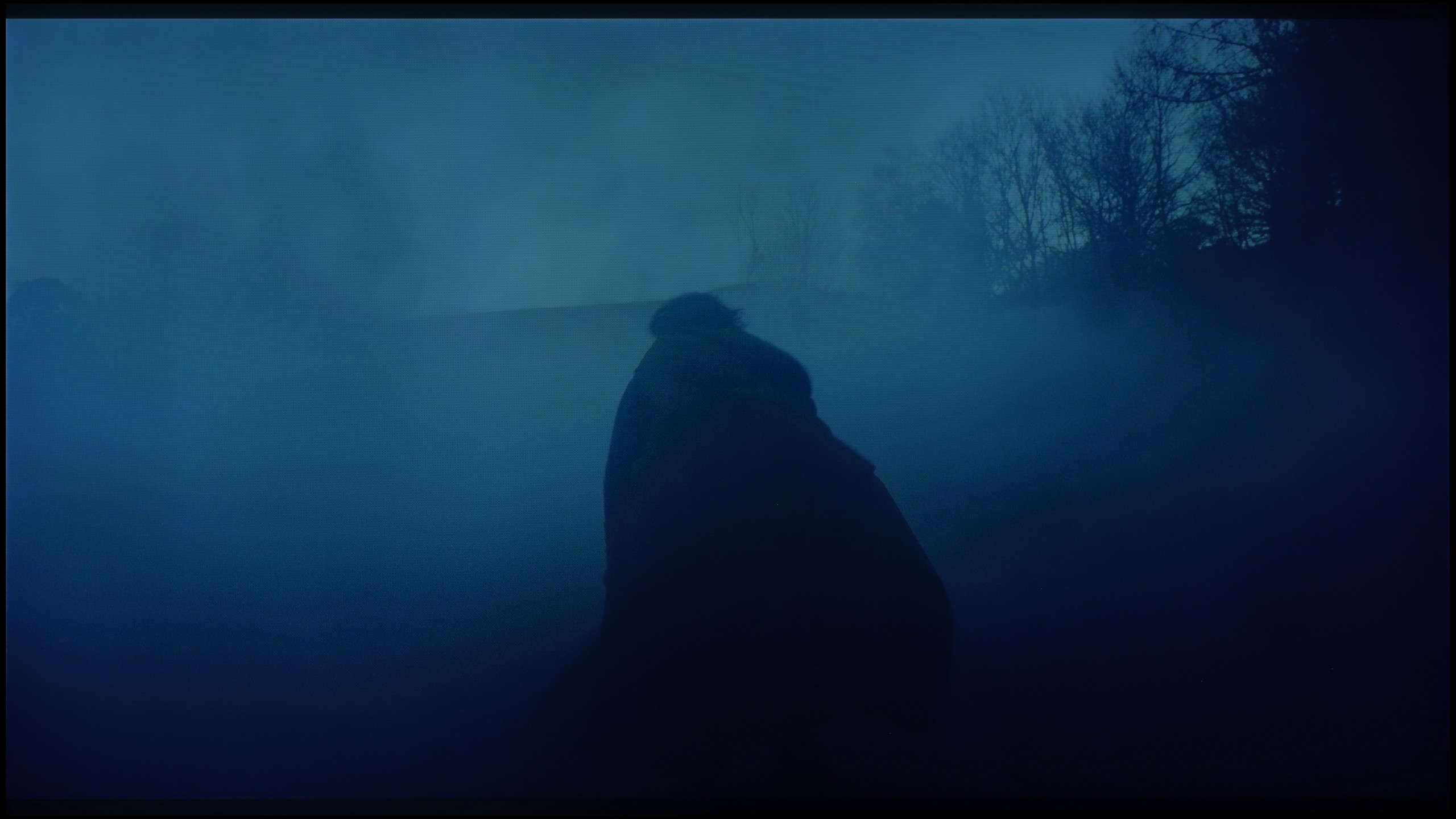

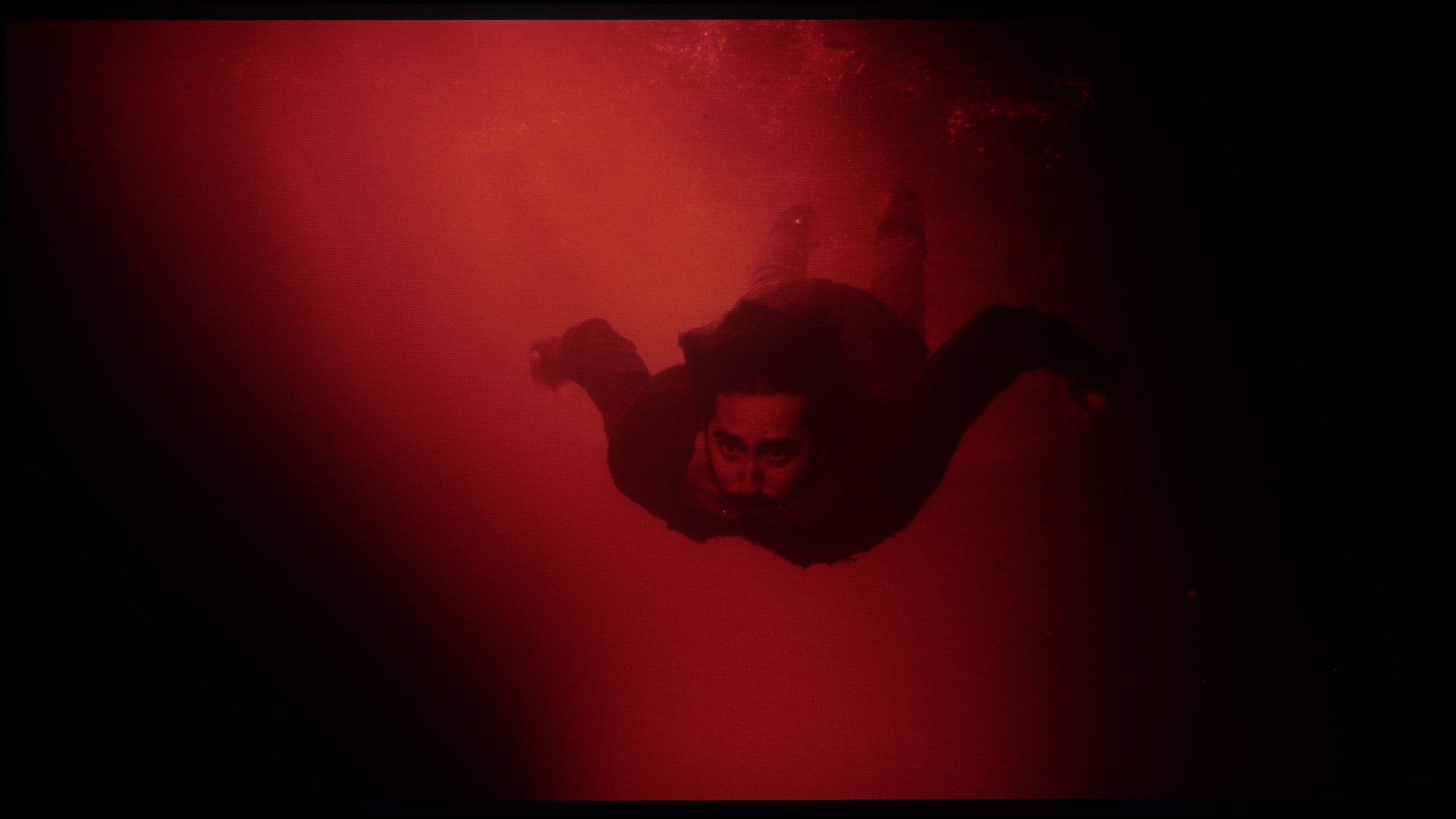




The fluidity of tonal transitions is one of those categories that even less advanced users can notice. If someone doesn't understand what it means — we're explaining it now. It concerns whether the colours blend smoothly into one another or if their "gluing" is visible in the form of distinct bands. Good tonal transitions are those that are natural and smooth, without large jumps in colour.
The Hisense S7NQ performs very well in this category, although it must be admitted that it fares slightly worse than Samsung The Frame. In very bright scenes, slight imperfections can be noticed, but you really need a keen eye to catch them. Overall, as with most "frame" style televisions, it still performs excellently.
In this respect, the QN80F truly impresses. The transitions between colours are smooth, nothing is torn, and there are no annoying stripes in the sky or strange blotches in the shadows. Film scenes in darker tones performed particularly well – and this is where most televisions tend to struggle. If one is very determined, they may notice slight banding in the brightest sections, but that is really stretching for an issue. In everyday viewing, no one should have a problem with this. To put it plainly: the tonal transitions are so good that one can forget about them – and simply enjoy the film.
Image scaling and smoothness of tonal transitions
5.5/10
7/10
Smooth transition function


Image without overscan on the SD signal


Equally important is how the television handles tonal transitions on a poor signal – for example, in older films, television, or on YouTube. Unfortunately, despite the presence of the "Smooth and Gradient Picture" feature, which was supposedly meant to improve this aspect, its performance is truly poor. It's barely noticeable that it has any real impact on the visibility of colour transitions.
The image scaling is also lacking. Yes, it can be observed that the television tries to "enhance" the quality, but the end result is far from ideal. The image often appears slightly jagged, which is particularly noticeable in the example of tree branches in the background. Additionally, the Hisense S7NQ has a clear tendency to crop the image at lower resolutions, causing subtitles in news items or finer details in the image to be missed.
If, while watching lower quality materials – for example from YouTube – we notice strange colour transitions or unwanted artefacts, it's worth checking the settings and turning on the noise reduction feature. In our opinion, the best setting is at “medium” – it effectively smooths out problematic colour transitions while not blurring the entire image too much. However, one must know this: this option tends to remove film grain. If someone cares about preserving this effect (e.g. in older films), it’s better to simply turn it off – regardless of the level, the grain always disappears.
When it comes to resolution scaling (or so-called upscaling), Samsung – as usual – performs very well in this area. The QN80F may not compete with top models costing tens of thousands, but for its price class, it really does impress. Materials of very low quality (e.g. from SD television or older video files) are noticeably improved and look surprisingly decent. The only noticeable drawback is the typical Samsung issue with overscan – that is, slight cropping of the image edges in very low resolutions, e.g. 576p.
Blur and motion smoothness
6.5/10
7.5/10

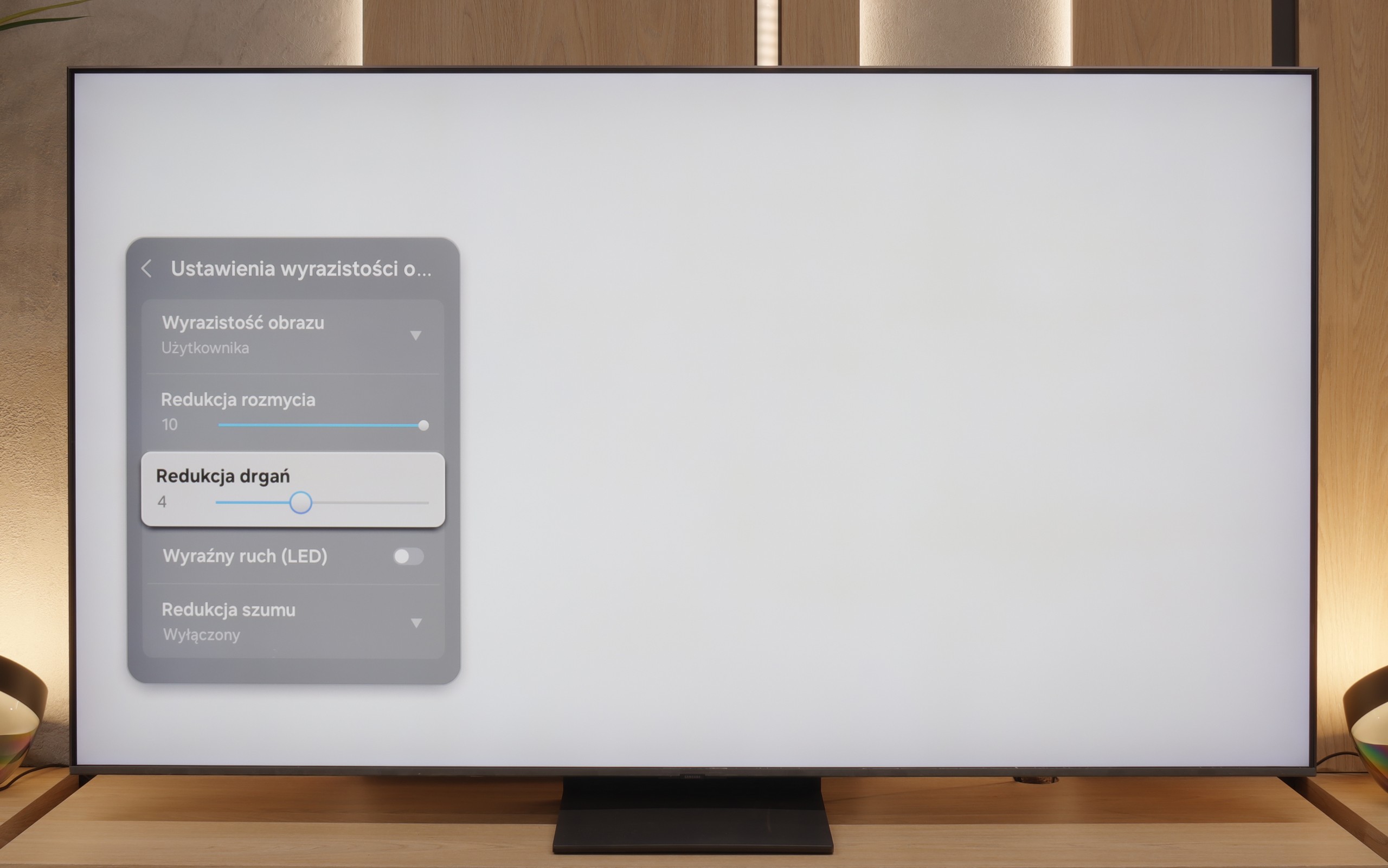
Blur (native resolution, maximum refresh rate):






Blur (BFI function enabled):
Image flickers in this mode



When it comes to motion fluidity, the television performs remarkably well. Although the S7NQ was designed primarily for displaying static elements – such as images – the manufacturer has implemented a 144 Hz refresh rate matrix. As a result, sports and games look really good on it.
For materials that are not recorded at a high frame rate, the manufacturer has provided two features that allow you to adjust the picture to your own preferences. "Motion blur reduction" and "judder reduction" operate on a 10-point scale, allowing you to choose between a more cinematic image – with characteristic frame jumps – and a smooth effect reminiscent of a "soap opera". How to set this up? That’s a personal matter – we leave the decision to you.
QN80F is truly a "fast" television. The applied panel offers a refresh rate of up to 144 Hz, which in practice means that the screen keeps up with the action – whether we're watching a film, playing games, or browsing dynamic content online. The image doesn’t stutter, isn’t excessively smeared, and overall looks simply smooth and pleasing to the eye. Of course, the manufacturer hasn’t forgotten about cinema fans – in the settings, we’ll find an option to adjust motion smoothness, allowing us to tailor the effect to our personal preferences. We can maintain a more "framey" appearance (for those who enjoy the classic cinematic vibe) or ramp up the smoothness to a higher level for a theatrical smoothing effect. Importantly, the choice is ours. Watching films and playing on the QN80F is simply a delight.
Console compatibility and gaming features
8.5/10
8.2/10
- ALLM
- VRR
- VRR range48 - 144Hz48 - 144Hz
- Dolby Vision Game Mode
- Correct implementation of HGIG
- 1080p@120Hz
- 1440p@120Hz
- 4K@120Hz
- Game bar

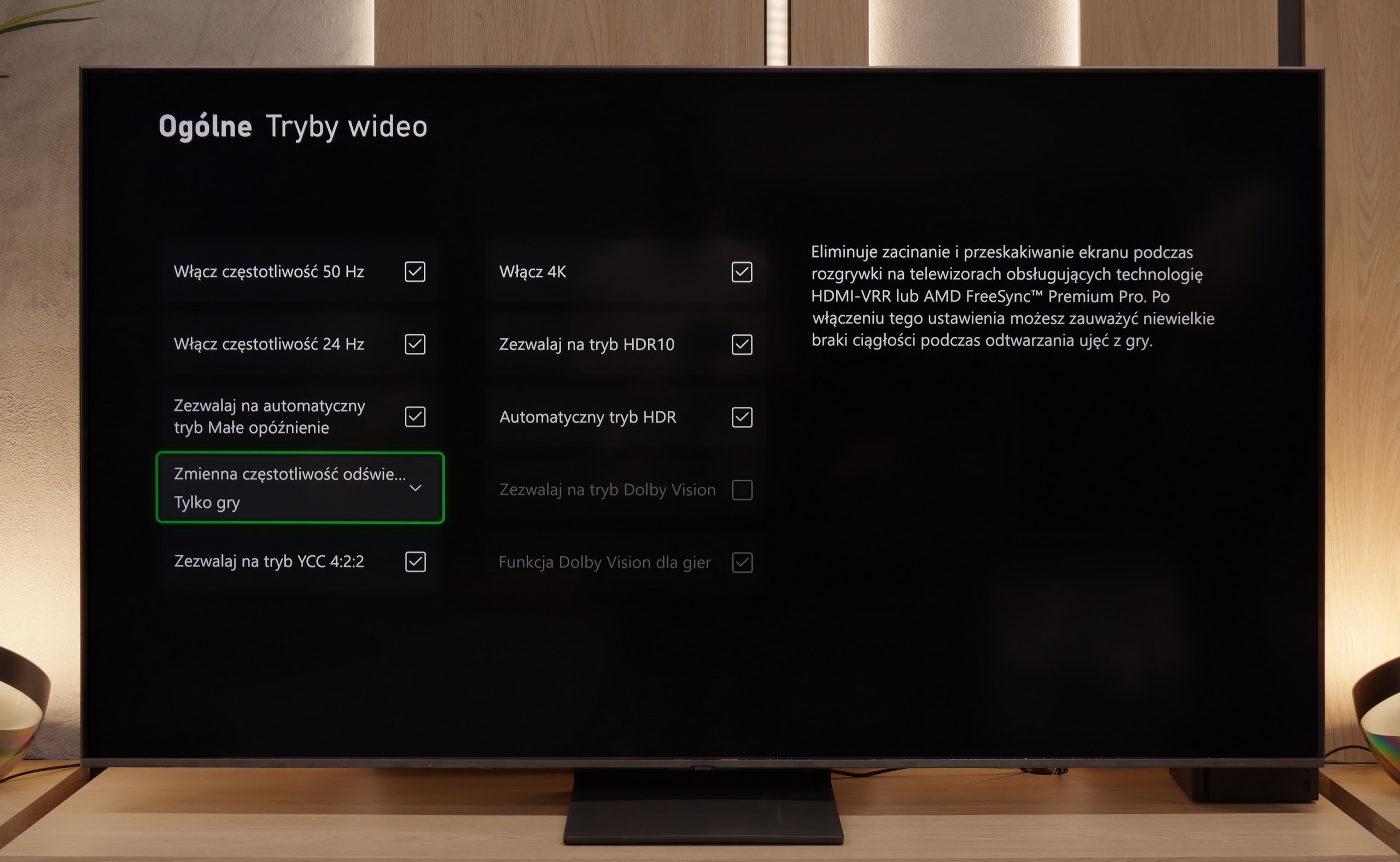



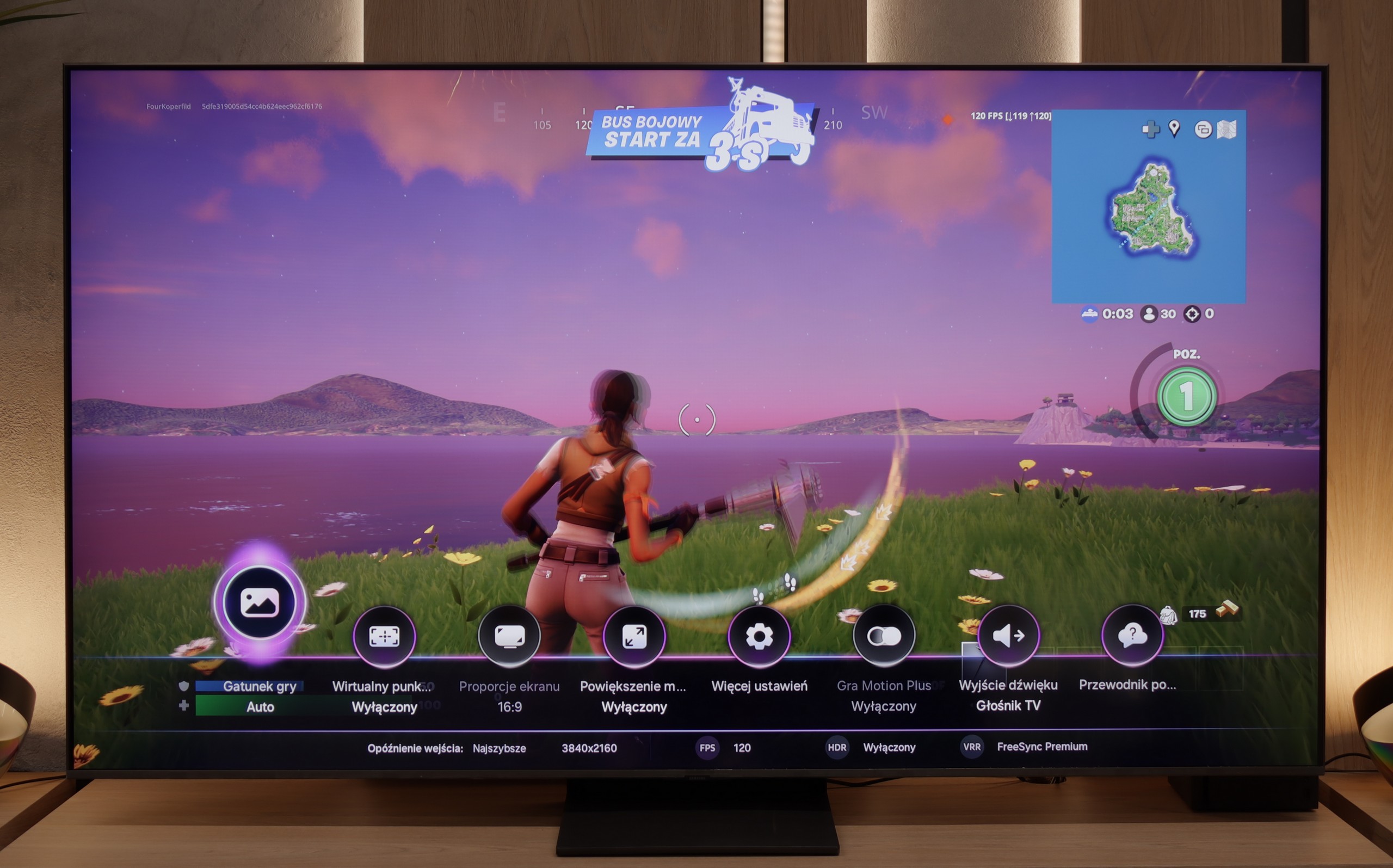

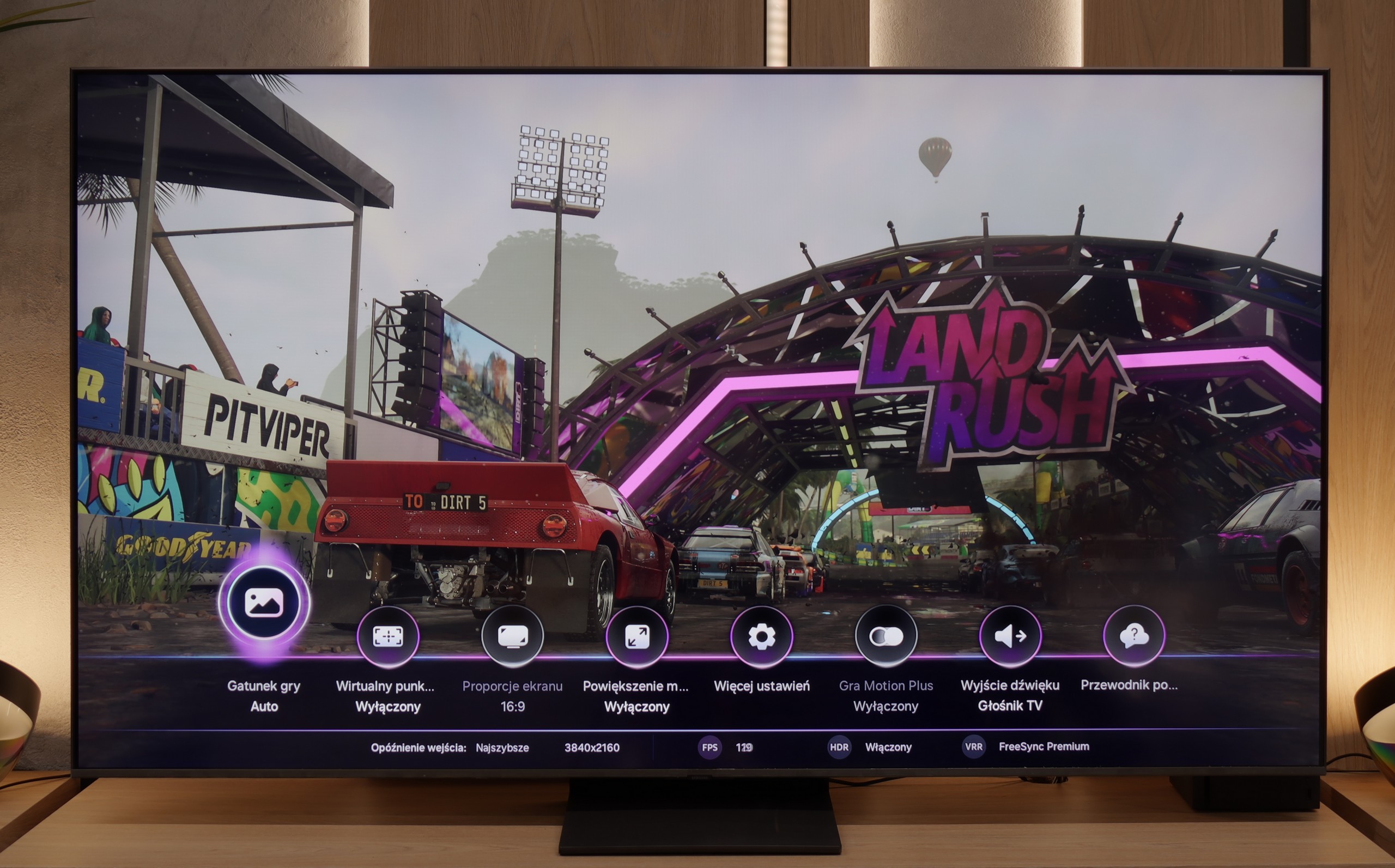
Although the S7NQ is a "picture" type television, it can indeed be used for gaming. Really. Here you can find almost everything (except for the HGiG mode) that a modern gaming television needs. The 144 Hz panel and two full-fledged HDMI 2.1 ports allow for the hassle-free connection of two consoles, such as the PlayStation 5 or Xbox Series X/S.
The television supports Automatic Low Latency Mode (ALLM) and Variable Refresh Rate (VRR), with no stuttering or issues. It also handles displaying high frame rates at lower resolutions without any trouble. Hisense deserves praise for a very attractive Game Bar – it displays all available picture options, and additionally, we have the ability to enlarge the minimap or turn on the crosshair (because sometimes someone might actually want to "aim" 😉).
The only missing element – as we mentioned earlier – is the lack of a proper implementation of the HGiG mode. It is specifically responsible for automatically adjusting the picture in games as the creators intended. It's a shame, because that’s the only thing preventing the Hisense S7NQ from being a full-fledged gaming "beast".
The Samsung QN80F is a television that delivers on almost every front when it comes to gaming. We have a 144 Hz panel, four full-fledged HDMI 2.1 ports, support for gamers in the form of variable refresh rate (VRR), automatic game mode (ALLM), and even one of the best-designed game bars on the market. The cherry on top is the motion smoother, which – uniquely in the world – works in games without significantly increasing input lag. Sounds like an almost perfect television for gamers? And indeed, it is almost that.
As usual, Samsung does not support Dolby Vision in games, but that no longer surprises anyone. However, it is considerably more surprising that... the HGIG function has disappeared – that is, the system that allows the console (e.g., PlayStation 5 or Xbox Series X) to precisely match HDR tone mapping to the television’s capabilities. In the latest firmware update for the 2025 models, this option has simply vanished. This looks more like a mistake than a deliberate move, but it must be noted fairly that as of the date of writing this review, the HGIG function is simply not available.
And it is precisely because of this one missing feature that the QN80F transforms from an almost perfect gaming television into a “nearly” perfect device. It’s a shame – because everything else suggested that Samsung could once again set the bar very high in this generation.
Input lag
8.7/10
9.8/10
SDR
HDR
Dolby Vision
Input lag in the Hisense S7NQ is decent, though it cannot be said to be extraordinary – especially by the standards of 2024/25. Values around 30–20 ms may not be very high and the average player is unlikely to notice it, but those who spend a lot of time gaming may experience a slight discomfort.
The situation is definitely better when playing in Dolby Vision mode – then the latency is lower and the gameplay feels more pleasant. The problem is that there are still few games supporting this mode, and they are mainly available on the Xbox console.
The QN80F does not disappoint when it comes to response time. The input lag for 120 Hz content drops below 10 ms, which can be considered an almost perfect result – it is hard to expect more in this class of TVs. Gaming is smooth, responsive, and without delays that could annoy even the most sensitive players. For 60 Hz materials, the lag is higher, around 19 ms, but this is a completely natural phenomenon and still falls within comfortable limits.
Compatibility with PC
7/10
8.8/10

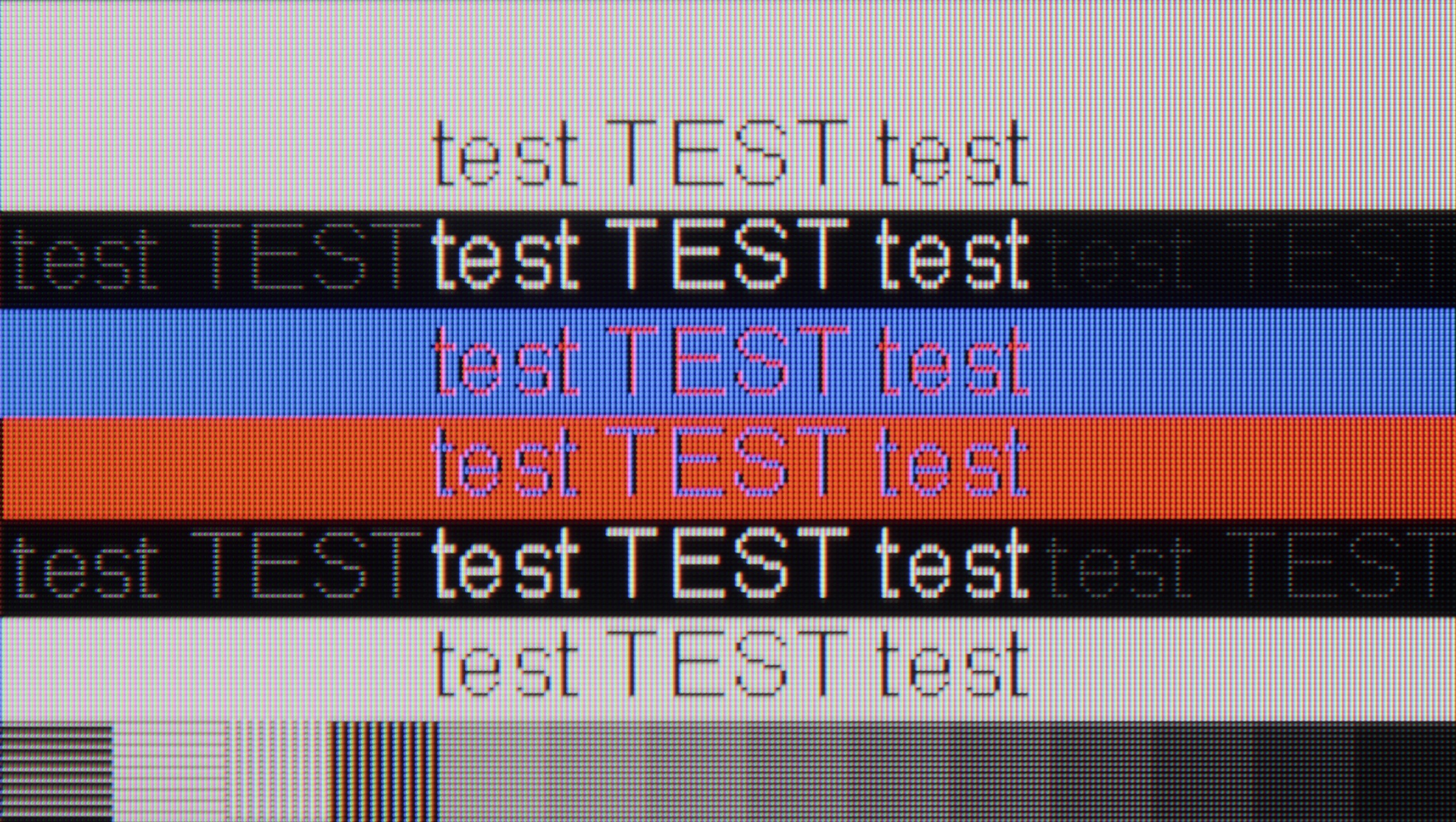
When it comes to working with a computer, the S7NQ Canvas TV performs really well. Gaming on it is seamless thanks to the presence of a 144 Hz panel and support for G-Sync with Nvidia cards. Input lag – as we mentioned earlier – is good, though not exceptional.
And what about work? It’s doable. The television has a correct implementation of chroma 4:4:4, so fonts look quite clear. You might nitpick about some minor issues with the thinnest letters on a dark background, but let's be honest – rarely does anyone sit a metre away from a 55-inch screen reading small text.
Playing on the QN80F with a connected computer is pure pleasure. The television effortlessly works with NVIDIA graphics cards (thanks to G-Sync support) and AMD (thanks to FreeSync Premium), and the 144 Hz refresh rate only enhances comfort during dynamic gameplay. Everything works immediately, without unnecessary fiddling with settings – exactly as it should.
When it comes to work, it is also very good. The readability of fonts is at a high level, and texts appear sharp and clear. With very thin horizontal lines, some minor imperfections in shading can be noticed, but honestly – you really have to look closely. Unless, like us, you sometimes enjoy looking at the screen with a magnifying glass… then you might spot something 😉.
Viewing angles
3.4/10
3.1/10
The viewing angles here are typical for a VA panel. The S7NQ loses quite a bit when viewed at around a 45-degree angle – the colours fade, and the brightness clearly drops. It’s a pity, because after all, this is a television that is meant to display works of art – it would be nice to be able to look at them from different places in the room, not just straight on.
QN80F, like most TVs with a VA panel, does not impress in terms of viewing angles. All it takes is a slight lean to the side to notice a significant drop in brightness and lost colour saturation. The picture loses its "depth" and "vibrancy", and darker scenes may appear slightly washed out. However, this is a typical characteristic of VA panels, which provide significantly better native contrast than IPS panels in return. In short: something for something. If you are sitting directly in front of the screen, there will be no problem. But when watching together in a larger group, it is worth keeping this in mind.
TV efficiency during daytime
5.4/10
6.6/10

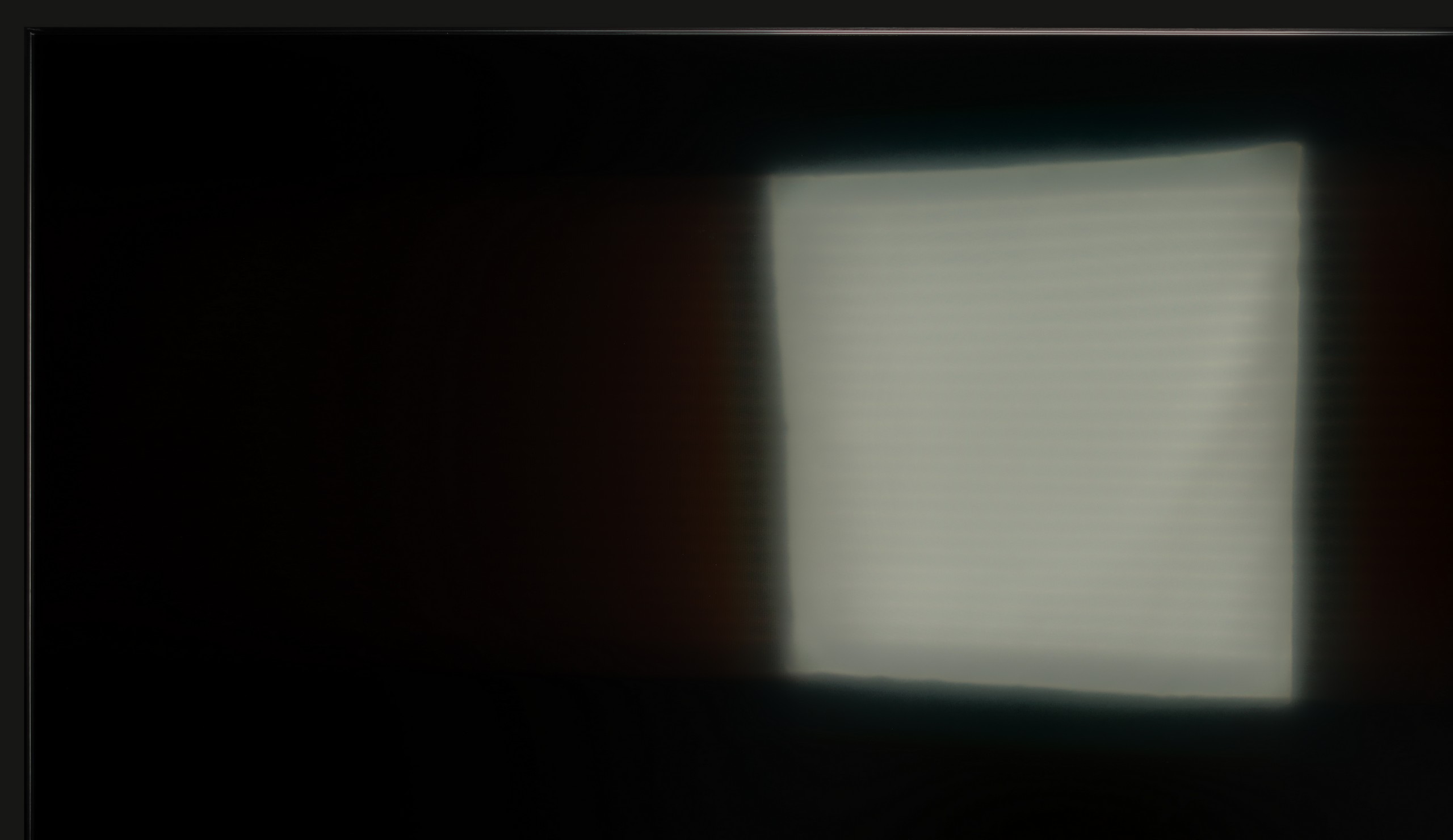


Matrix brightness
Average luminance SDR
Samsung QN80F: 543 cd/m2
Hisense S7NQ CanvasTV: 497 cd/m2
The Hisense S7NQ Canvas TV is equipped with a matte display, which quite effectively suppresses reflections – very similar to its Chinese rival, the TCL A300 NXTVision. Unfortunately, both designs fall short in this category compared to Samsung's The Frame, which offers a significantly better anti-reflective coating. In the case of the Chinese models, including the S7NQ, colours fade quite noticeably under light, and black performs poorly in such conditions. The brightness of the television reaches around 500 nits – a fairly decent value for a matte screen, but still lower than that of the aforementioned The Frame. Generally, if someone prefers matte displays, well... it looks like it looks – Samsung simply did it better.
The QN80F is truly a bright television. The average brightness in SDR content is around 550 nits, regardless of the scene, which in practice means that you can comfortably watch content even in a well-lit room – and you don’t have to close the blinds every time you turn on a film. The new satin coating on the panel also deserves praise, as it performs significantly better at reducing reflections compared to last year’s QN80D. Glare is less bothersome, and the screen maintains readability in various lighting conditions. It’s hard to find fault here – the QN80F performs simply excellently during the day.
Details about the matrix
Subpixel Structure:
Panel uniformity:


Hisense S7NQ CanvasTV
Samsung QN80F
TV features
9/10
7.5/10
- HDMI inputs2 x HDMI 2.0, 2 x HDMI 2.1 48Gbps0 x HDMI 2.0, 4 x HDMI 2.1 48Gbps
- OutputsToslink (Optical audio), eARC (HDMI), ARC (HDMI)Toslink (Optical audio), eARC (HDMI), ARC (HDMI)
- Network InterfacesWi-Fi 2.4GHz, Wi-Fi 5GHz, Ethernet (LAN) 100MbpsWi-Fi 2.4GHz, Wi-Fi 5GHz, Ethernet (LAN) 100Mbps
- TV receptionDVB-T, DVB-T2, DVB-S, DVB-S2, DVB-CDVB-T, DVB-T2, DVB-S, DVB-S2, DVB-C
Classic features:
- Recording to USB (terrestrial TV)
- Recording programming
- Picture in Picture (PiP)
- RF remote control (no need to aim at the screen)
- Backlit remote control
- Teletext
- Audio only mode
- Possibility to connect Bluetooth headphones to the TV
- Possibility to simultaneously use Bluetooth headphones and the TV speaker
Smart features:
- AirPlay
- Screen mirroring (Windows Miracast)
- Wyszukiwanie głosowe
- Voice search in native language
- Ability to connect a keyboard and mouse




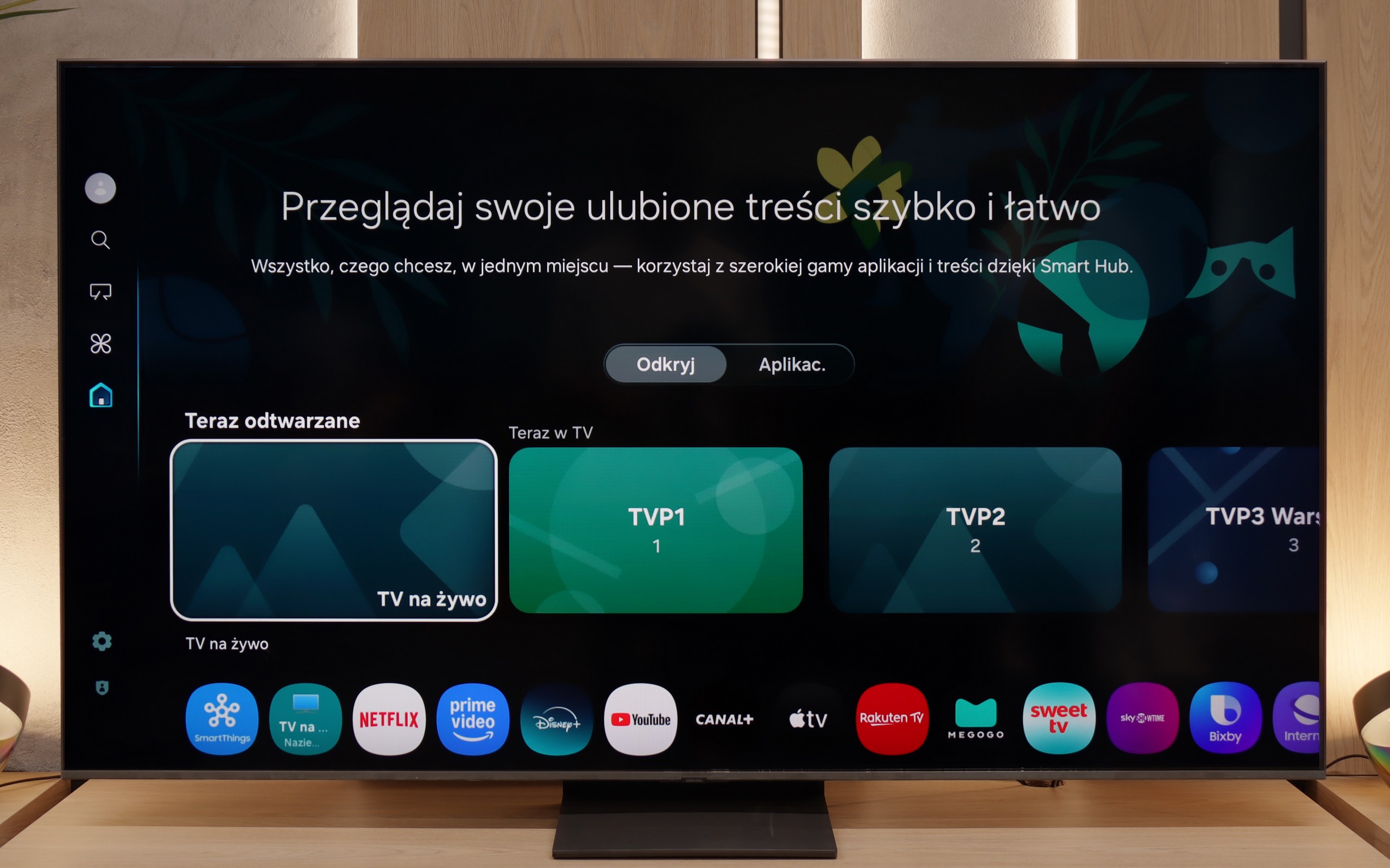
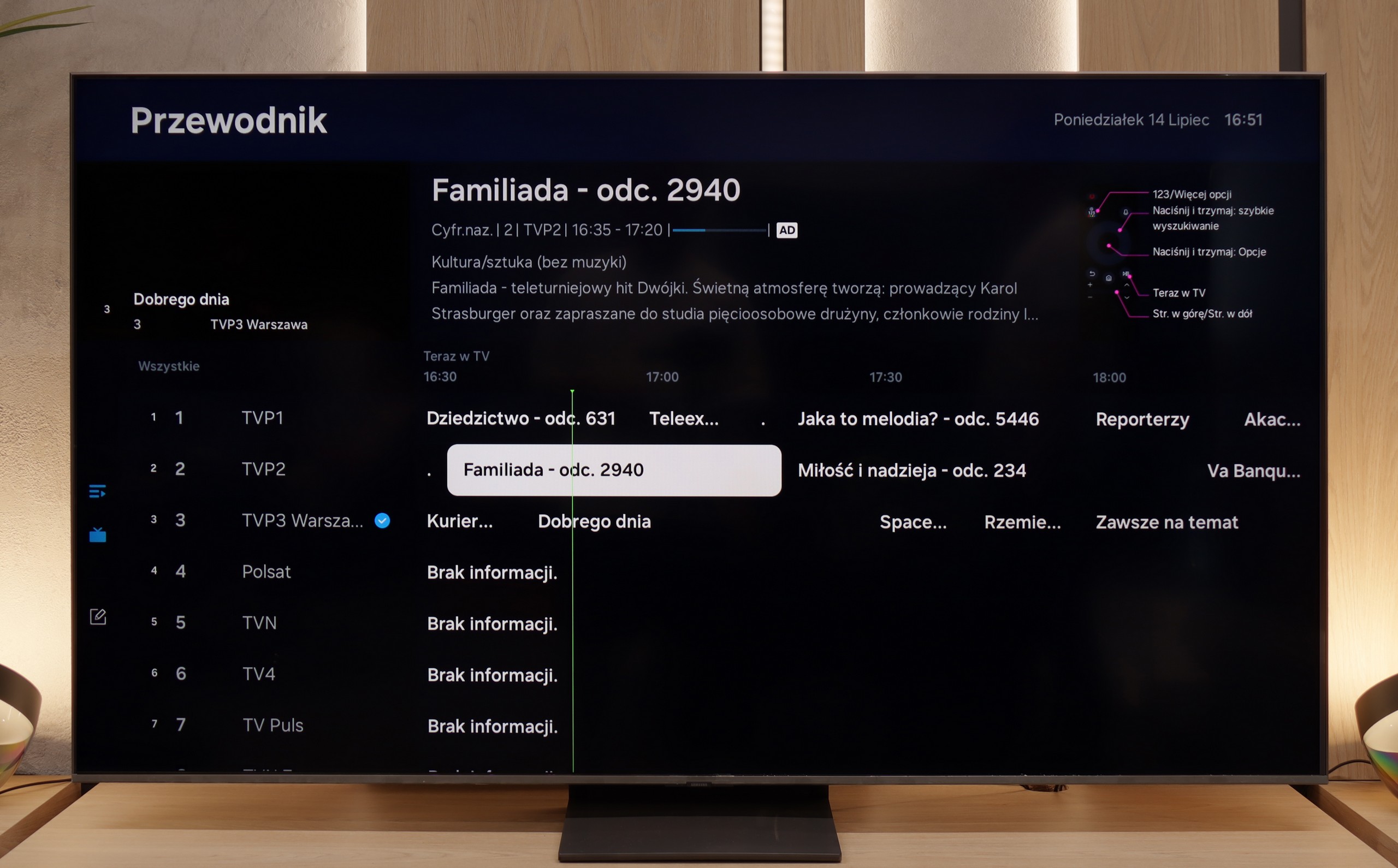
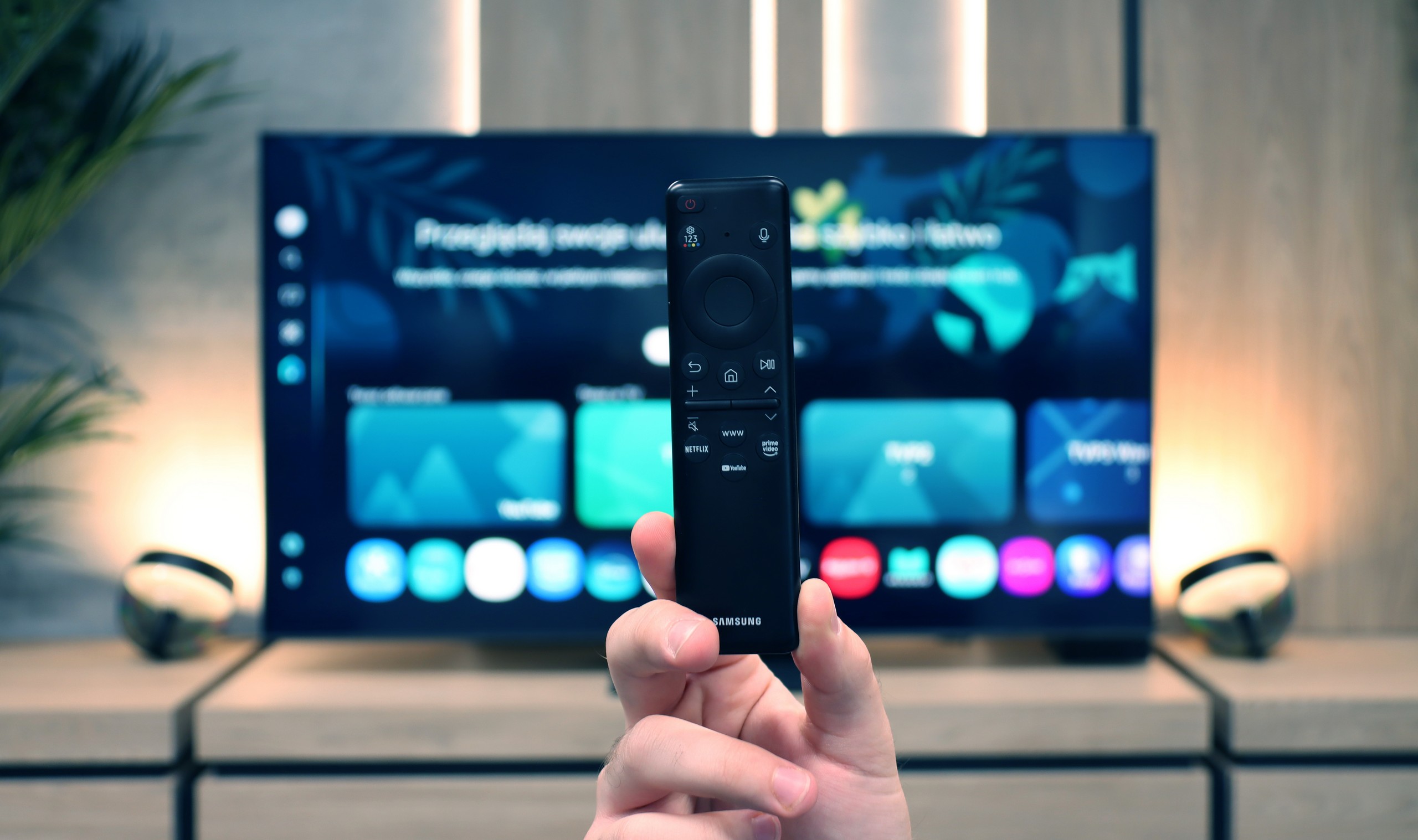
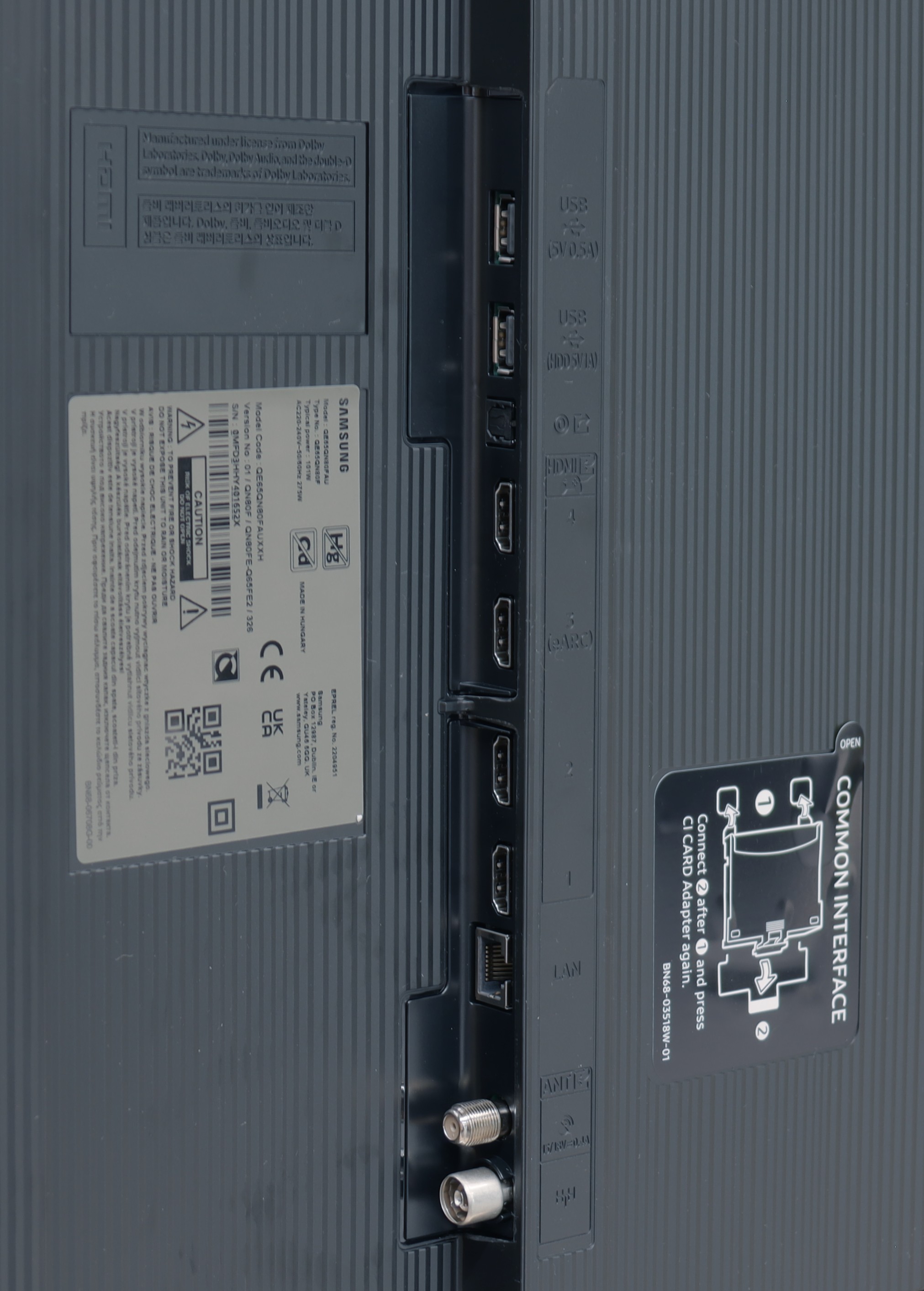
As the Hisense S7NQ is a television designed for a specific purpose, we will start the description a bit differently – from the most important aspect of such models, which is the display of artworks. Like all "art" televisions, it features a special mount, allowing the screen to be installed completely flat. The biggest advantage compared to the Korean Samsung The Frame is the fact that, despite the lesser availability of images in gallery mode, all of them are completely free – there is no need to pay any subscription fees. An additional bonus included with the S7NQ is the light brown frame. This is quite a plus, especially if someone was planning to choose that colour anyway – it can save a bit of money on both the frame and the subscription.
However, when it comes to the quality of the displayed images, unfortunately, it is evident that the Samsung The Frame performs significantly better in this regard. In the S7NQ, the images look more digital, while in The Frame, the Art Store mode offers real scans of artworks, where you can even see the texture of the paint or the brush strokes of the artist. And once again, we return to an old truth – for better quality, you simply have to pay.
Fortunately, the S7NQ is not just an “art piece,” but also a regular television – and it performs really well in that role. Like most Hisense models with the VIDAA system, it has many basic functions such as USB recording, screen mirroring, and AirPlay support. As for applications – the most popular streaming services are present here, and you can find their full list below.
SmartTV QN80F: Tizen
In terms of smart features, the QN80F has nothing to be ashamed of. On the contrary – Tizen is one of the richest operating systems when it comes to functionality. We have voice search, support for AirPlay, Miracast, and all the major streaming platforms at our fingertips. But Samsung's true advantage reveals itself in the smart home – SmartThings. Here you can not only synchronise light bulbs and vacuum robots but also integrate devices from other manufacturers, thanks to support for the Matter standard. And suddenly it turns out that the QN80F can serve as a home command centre. There is just one "but" – Tizen is a closed system, so we may not find a few lesser-known applications. Although in practice it has everything that 99% of users need.
Classic TV features:
When it comes to classic features, it is just as good – well, almost. The QN80F supports picture-in-picture, which is a rarely seen but still useful PiP function. We can easily find the EPG, good old teletext (yes, it works!), and the ability to connect external devices via Bluetooth – whether it's headphones or a soundbar. Unfortunately, there is a lack of the option to record to USB from the built-in tuners. This is a minor setback, especially since the competition at a similar price increasingly offers this feature. It may not be a must-have function, but since everything else works so well, it's a pity that this feature is missing a dot over the i.
Playing files from USB
5.4/10
8.4/10
Supported photo formats:
Maximum photo resolution:

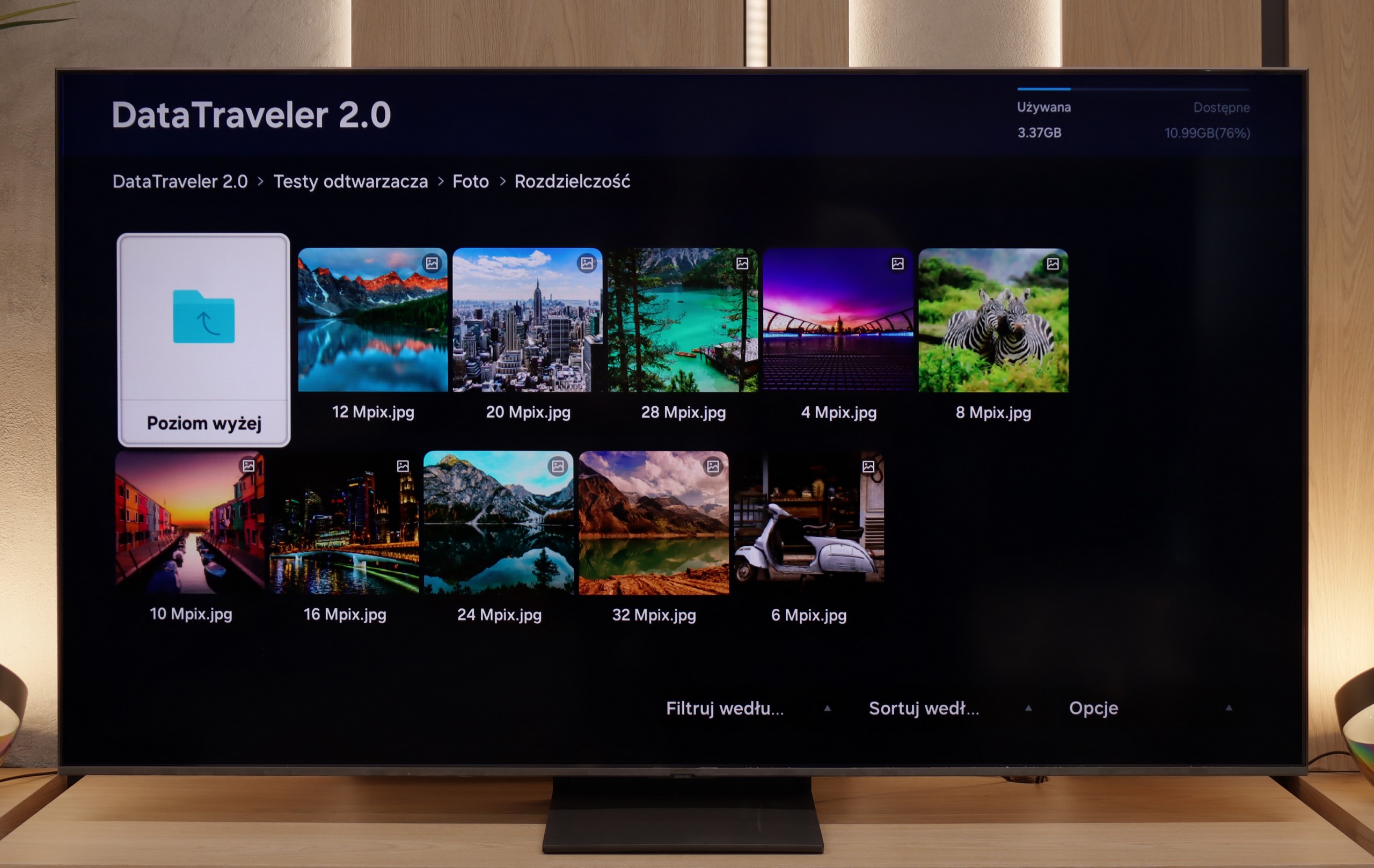
The Hisense S7NQ effortlessly plays the vast majority of popular audio, photo, and video formats. So why the relatively low rating in this category? Well – due to software issues. This is yet another Hisense television that did not allow us to open external subtitles in films. Regardless of whether we are talking about the .ass, .srt, .txt, or .sub format – the subtitles simply did not appear.
The most amusing (or rather the most frustrating) thing about all this is that in the menu, we find options to change the font colour, size, and background… The problem is that the subtitles themselves are not visible at all.
The built-in media player in the QN80F handles most popular video formats – from classic MP4 to slightly more demanding containers. It may not be a powerhouse like VLC, but it's perfectly adequate for home use. The situation is less impressive with photographs – here, unfortunately, it's rather modest. Support is mainly limited to the JPG format, but hey, at least that's the most important one 👌. During our tests, there was also a slight issue with subtitles. The QN80F could only handle the simple text format .txt – other, more advanced formats (like .srt or .sub) were unfortunately not recognised.
Apps
7.7/10
8.7/10














































Sound
6.3/10
6.7/10
- Subjective sound quality:6.3/106.7/10
- Dolby Digital Plus 7.1:
- Dolby True HD 7.1:
- Dolby Atmos in Dolby Digital Plus (JOC):
- Dolby Atmos in Dolby True HD:
- DTS:X in DTS-HD MA:
- DTS-HD Master Audio:
When it comes to sound, it presents itself... much like a television on the wall – that is to say, rather flat. Despite the use of a 2.0.2 speaker set with a total power of 36 W, we cannot speak of any exceptional sound quality here. But as is the case in most instances – buying even the simplest soundbar can radically change the situation.
On the plus side, it is worth noting the support for practically all popular Dolby and DTS codecs. This means we can easily connect the television to a home cinema system without having to fiddle with settings or sound conversion.
For a television of this class, the QN80F sounds surprisingly good. It supports the Dolby Atmos format, which is worth noting, as this is still not a given in many models in this range. Unlike the thinner QN70F, here you can even feel a slight bass – all thanks to the thicker casing, which simply provides more space for the sound to "breathe." It's perfectly adequate for everyday viewing and series, and with the right settings, one can even be tempted to listen to music without the need for external equipment. However – as is often the case with Samsung, there is unfortunately a lack of support for the DTS:X format, so if we are using audio devices that support this format, we will first need to connect them to the amplifier and only then to the television.


